When heading north into Uganda from Rwanda it doesn’t feel like you’re crossing a national boundary. There is of course a border crossing with guards, inspections, passport stamps and the like, but the landscape makes you feel like you’re still in Rwanda. There are hills everywhere, and on these hills are countless women working the soil to grow maize, cassava, millet, or sweet potatoes for their families. These different crops form a unique quilt-like patchwork of colors on the hills which is actually quite beautiful. Though this landscape is very similar to Rwanda, it is most definitely Uganda. Plots of land are easier to come by than in neighboring Rwanda, and for the refugees fleeing violence in neighboring Congo this is especially important. The Ugandan government has made it a policy over the last several years to be truly welcoming to refugees. Often, refugees are given farmland free of charge by the government in order to be able to provide for their families. They are also able to legally work upon arrival in Uganda, something that seems so basic and simple, yet is actually quite unique amongst countries that accept refugees.

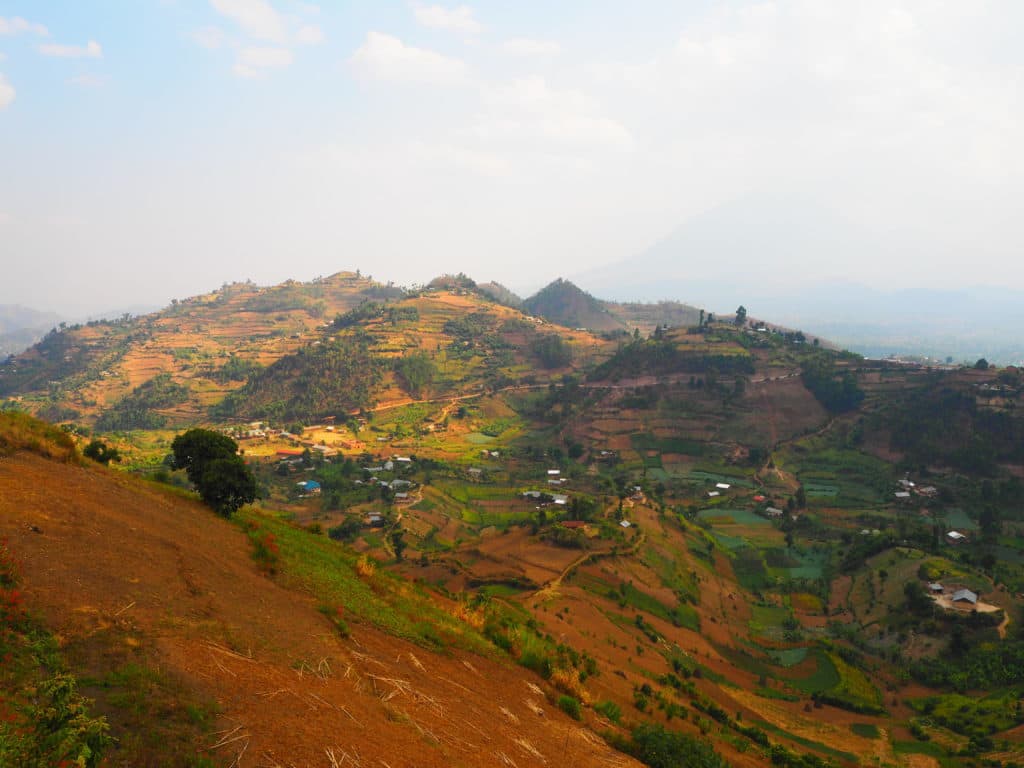
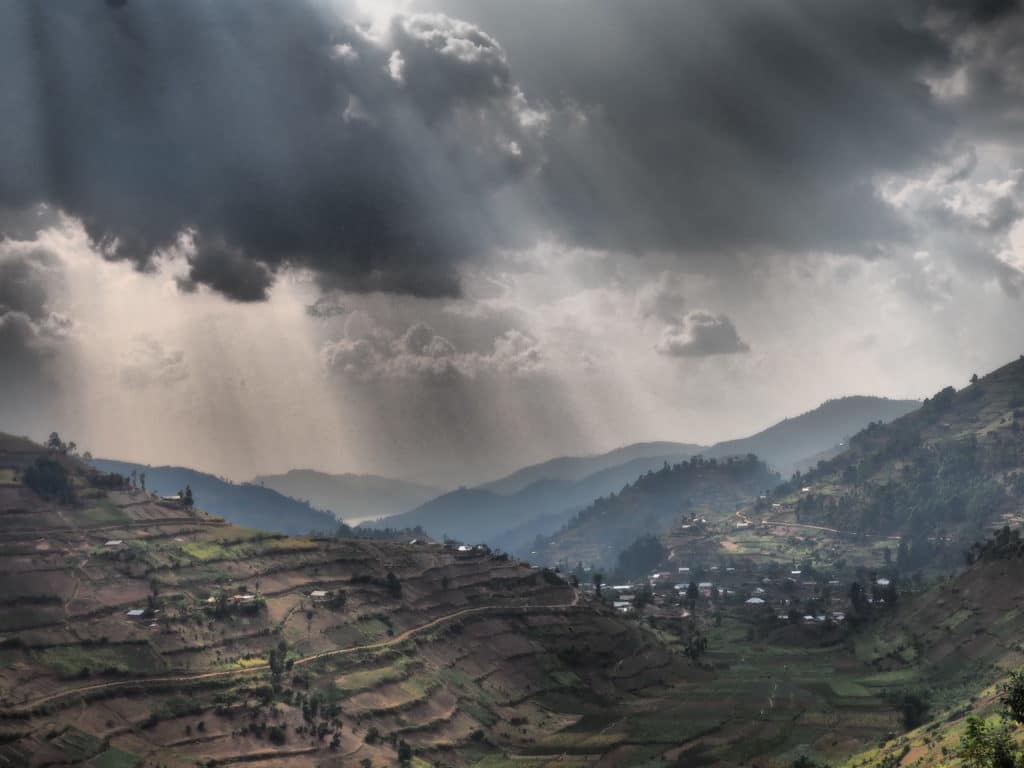
This friendliness to refugees was what initially put Uganda on our list of countries to visit. Kathy had always wanted to see how the people of Uganda live with the large numbers of refugees, most notably from neighboring Congo. She had already also developed a fondness for the many Congolese refugee clients that she served in Albany, noting how especially kind they were to those around them. So, Uganda gave Kathy the opportunity to dig a little deeper into the refugee process and to understand a bit more about what makes Uganda’s refugee program successful.
While the refugee process is also interesting for me, its not necessarily what especially drew my attention to Uganda. I was mainly interested in getting back out into nature and witnessing wildlife up close and personal again. (well, maybe not as up close and personal as those damn baboons!) Uganda has numerous national parks that are home to plenty of Africa’s famous wildlife, so we had to narrow it down a bit. We had already done Gorilla Trekking in the Congo, so Bwindi Impenetrable Forest was off the list (it has a cool name though doesn’t it?), but close by is perhaps Uganda’s most famous park; Queen Elizabeth National Park. We chose to visit this large park as well as one additional park further north; Murchison Falls National Park.
Public transportation to the National Parks in Uganda doesn’t really exist, so we hired a driver through the same small company that took us into the Congo. The owner, Moses, was quite the charismatic salesman and a genuine joy to be around so we didn’t hesitate when he offered us a van and driver for a very reasonable price for our trip into Uganda. As it turns out, our driver, Chance, was a former refugee from the Congo who was forced to flee into Uganda in 2008. So, on this leg of our trip in Uganda, I would get the opportunity to see more of Africa’s spectacular wildlife and Kathy would get the opportunity to learn more about refugees in Uganda through Chance’s personal experience.

Our first stop was in Queen Elizabeth National Park. This park is famous for its tree climbing lions that perch in the low lying branches of large fig trees during the day. Though these particular sort of lions eluded us, we did come upon a large male lion staking out his territory. He was marching slowly in a straight line through the grassland, occasionally stopping to spray a bush or rock with his scent. He was completely engrossed in this activity, paying utterly no attention to the herds of Uganda Kob antelope that scattered before him. We followed him for a while, entranced by his movements. After he finally disappeared from view, we all looked at each other and said “wow”. I showed Kathy and Chance the pictures I had taken, and Chance showed me some pictures he had taken with his phone. Chance said it was only the second time in his life he had seen a lion, and this one was far closer than the other he had seen. He was so excited that he sent the pictures to his friends right then and there!
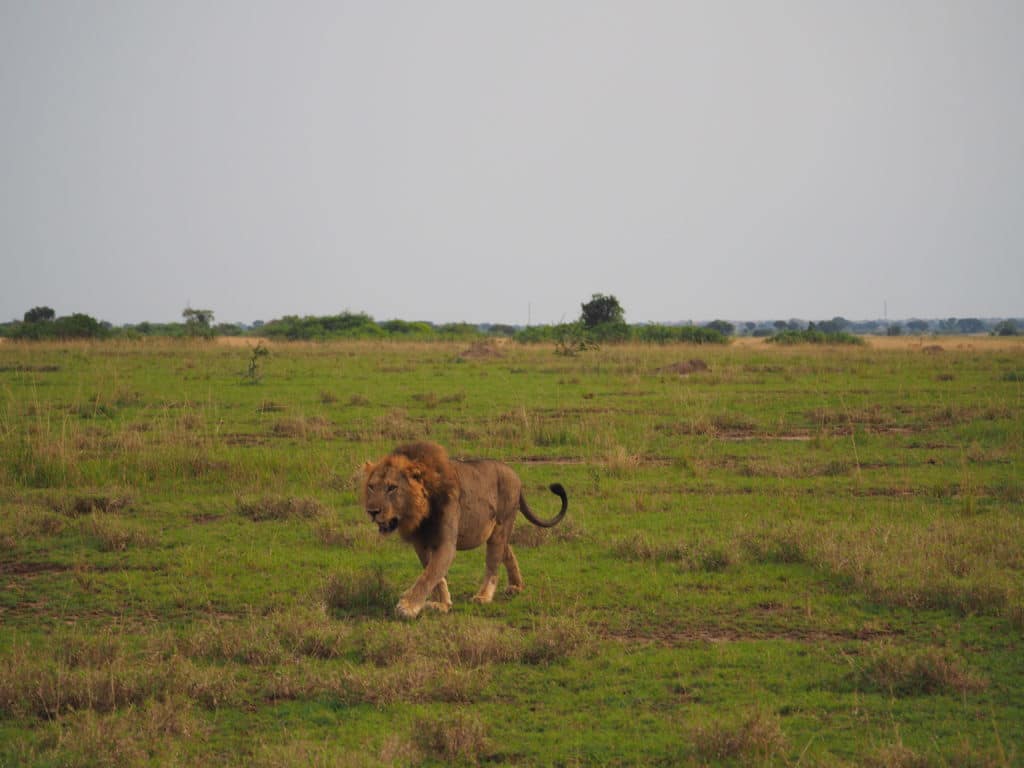
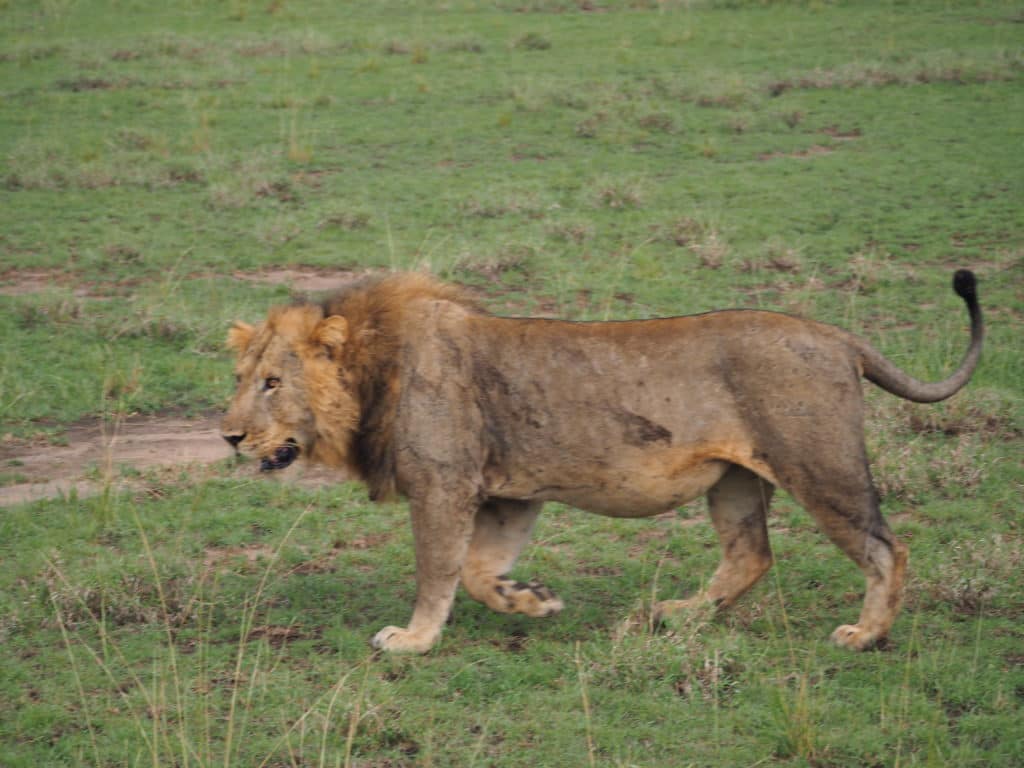
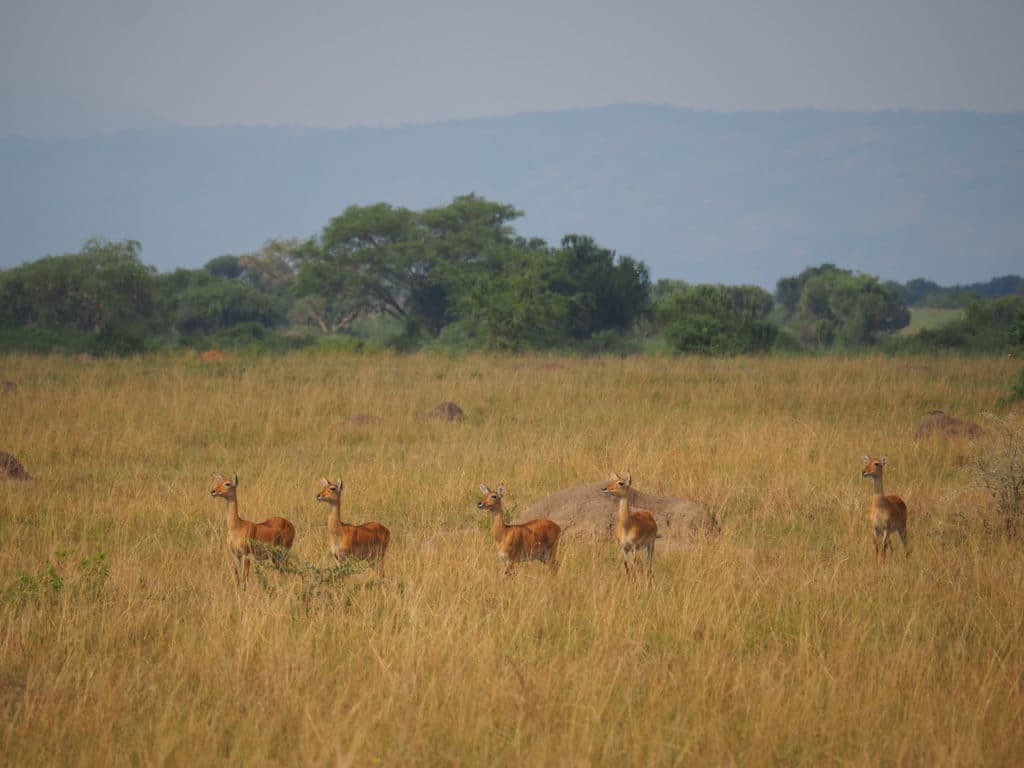
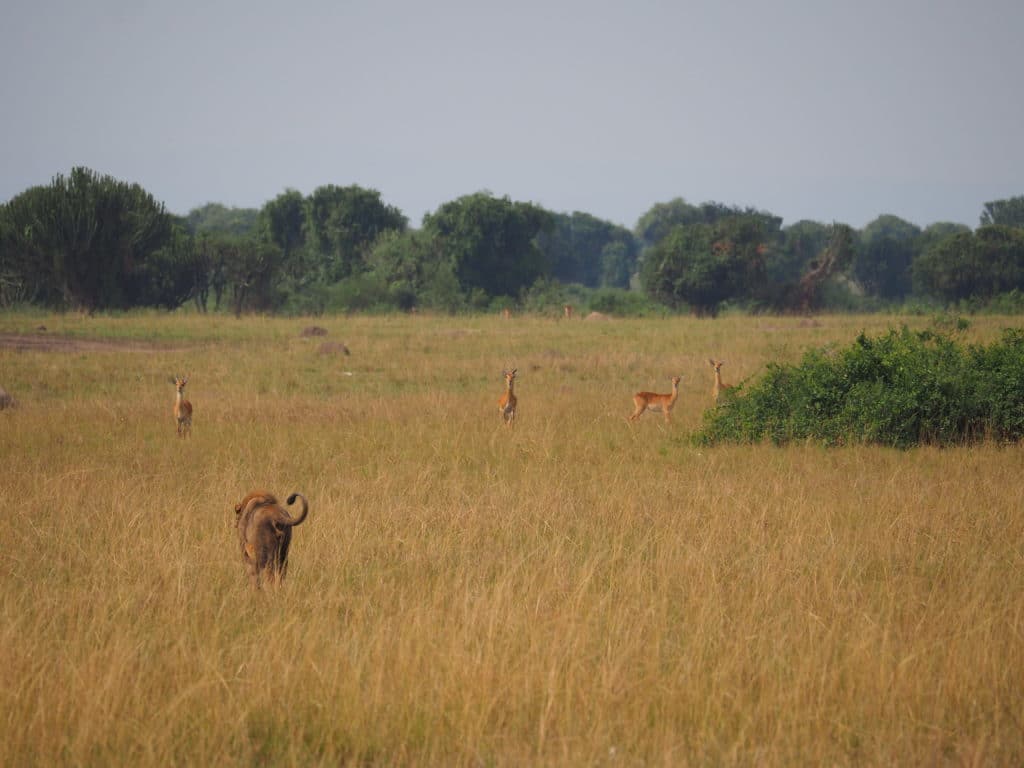
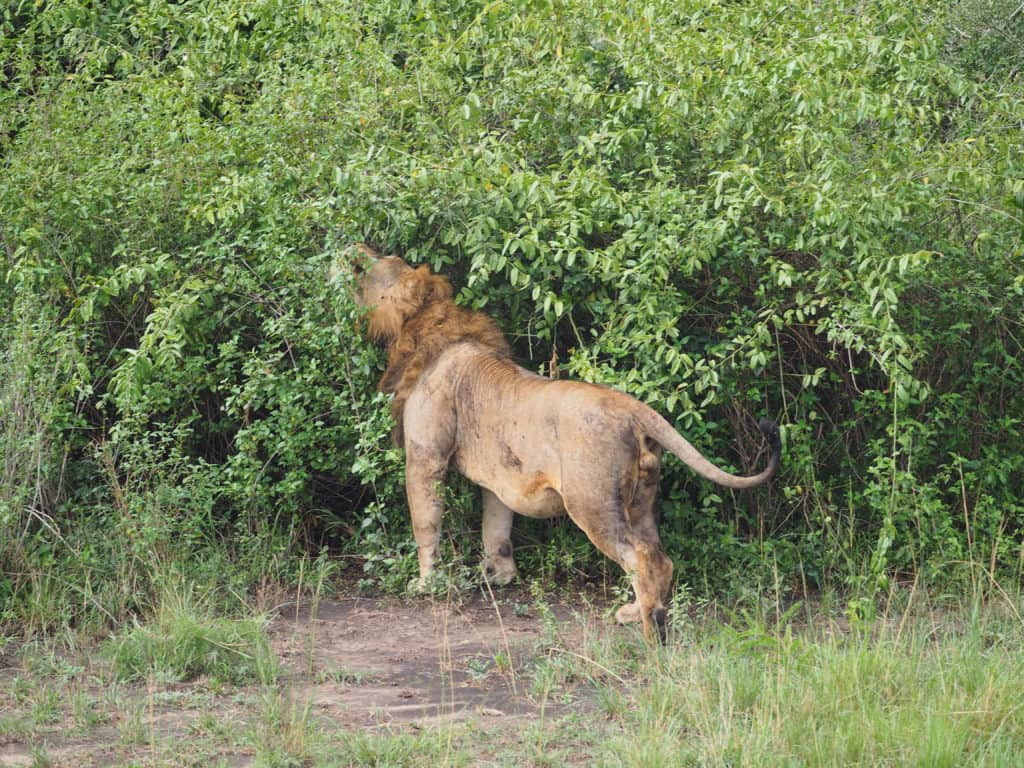
The next day we woke up early and drove back into the park. We visited a unique area that was full of the craters of long dead volcanos. Most of these craters were dry, but a few held lakes that rang out with a putrid stench of rotten eggs from the high sulfur content in the water. While they were beautiful to look at, they weren’t beautiful enough to overcome that smell, so we moved on rather quickly. We left the area with the craters and descended into a scrubby habitat with lots of small trees. This was the home of the majority of the parks elephants. The scrubby trees and bushes provide them with plenty of food for foraging. Sure enough, it wasn’t long before we ran into a group of them trudging through the trees. They stopped along the road and munched on an especially un-appetizing looking tree before moving off further into the bush. It never gets old watching these giants, they are absolutely majestic, pure and simple. Our last stop in Queen Elizabeth was at the equator. The park sits exactly in the middle of earth, so the park authorities have erected a little monument to let people know they’re crossing into another hemisphere!
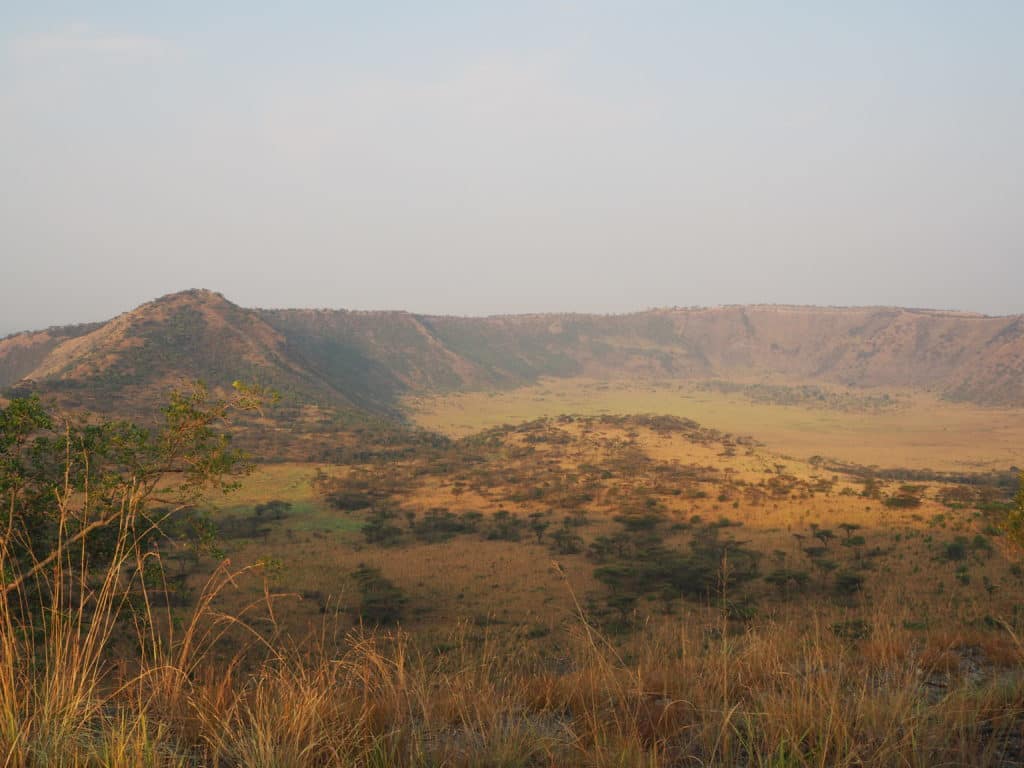
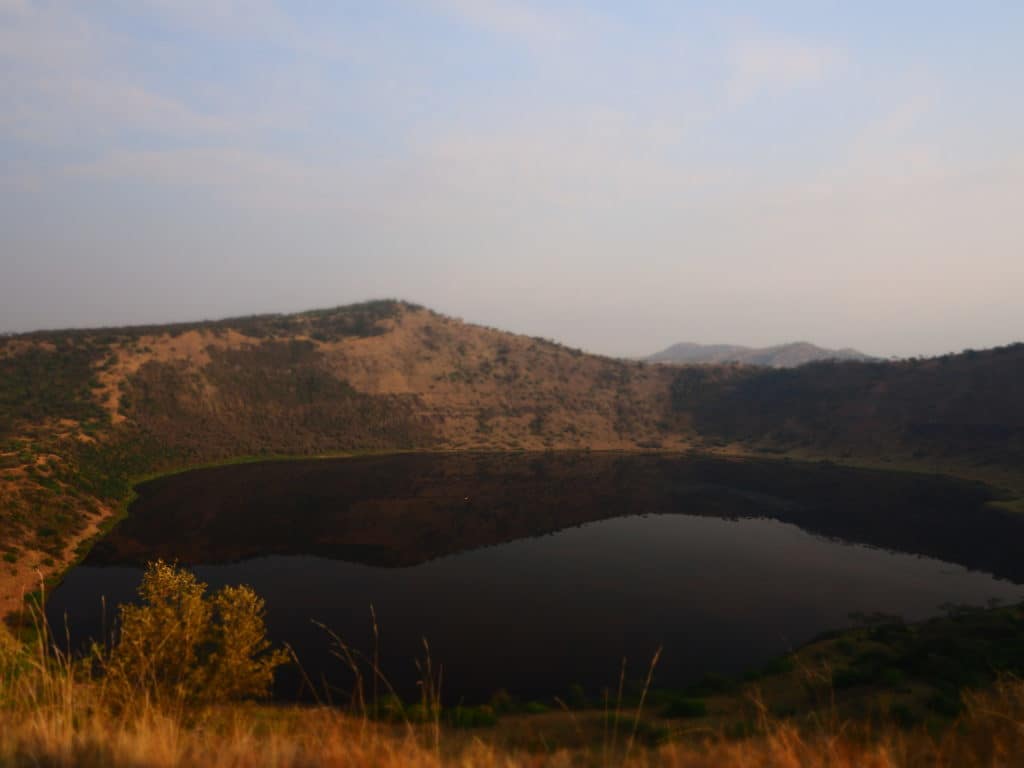

From Queen Elizabeth National Park we made our way north towards Murchison Falls National Park. Though it is only 300km/185mi away, it took us a total of 12 hours of driving to get there. That should give you an idea of how terrible the roads in Uganda are! It was dirt roads roughly 80% of the time, full of potholes and vehicles that were too large to fit on the road. We had gotten used to the African roads and African travel times by this point though so it didn’t bother us. It simply gave us more time to chat with Chance and gaze out the windows at the passing landscape.
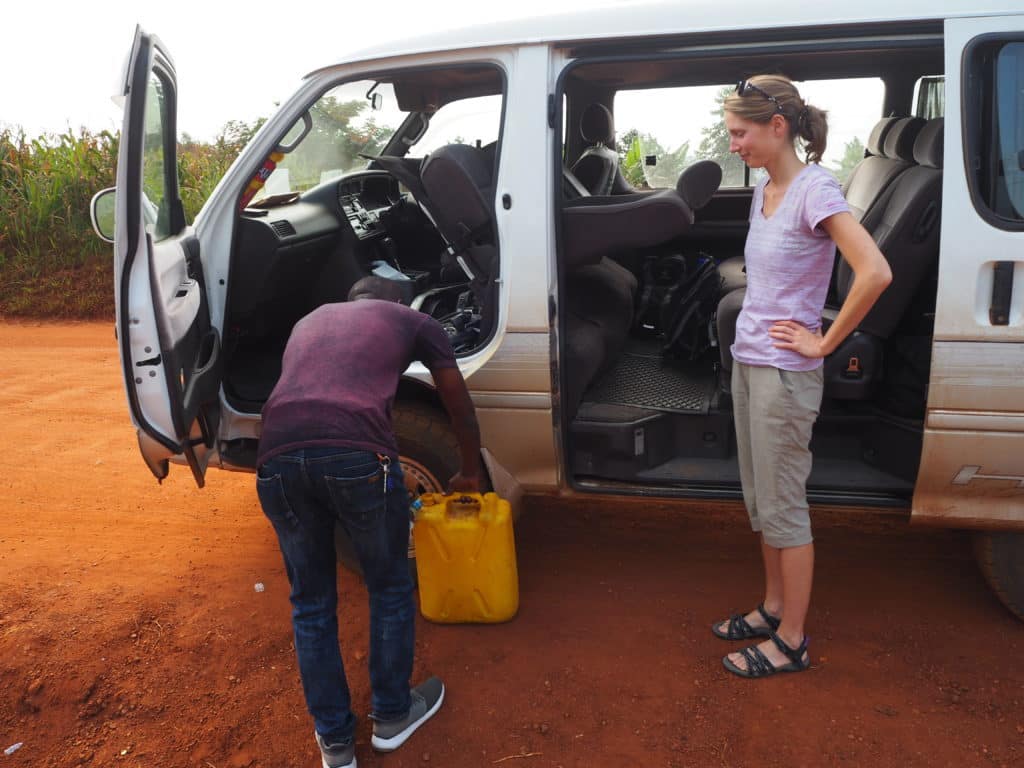
The long and bumpy trip to Murchison Falls was certainly worth it. It was probably one of our favorite parks in Africa. Though it can’t compete with the Serengeti or Masai Mara, it is still immensely beautiful and full of life. The northern section of the park is savanna, packed with large game animals like giraffe, elephant, lion, buffalo, and antelope, while the southern section is mostly forest, home to numerous species of monkeys and countless species of birds. Separating these two sections is the beautiful Nile river. Throughout the park the river jostles its way through forests and down canyons, forming spectacular waterfalls along the way, most notably the park’s namesake; Murchison Falls. The river finally opens up into a large delta as it flows into Lake Albert, forming a large marshy habitat for thousands of storks and herons. This section of the river is also home to the famous nile crocodile, as well as its fat roommate, the hippo.
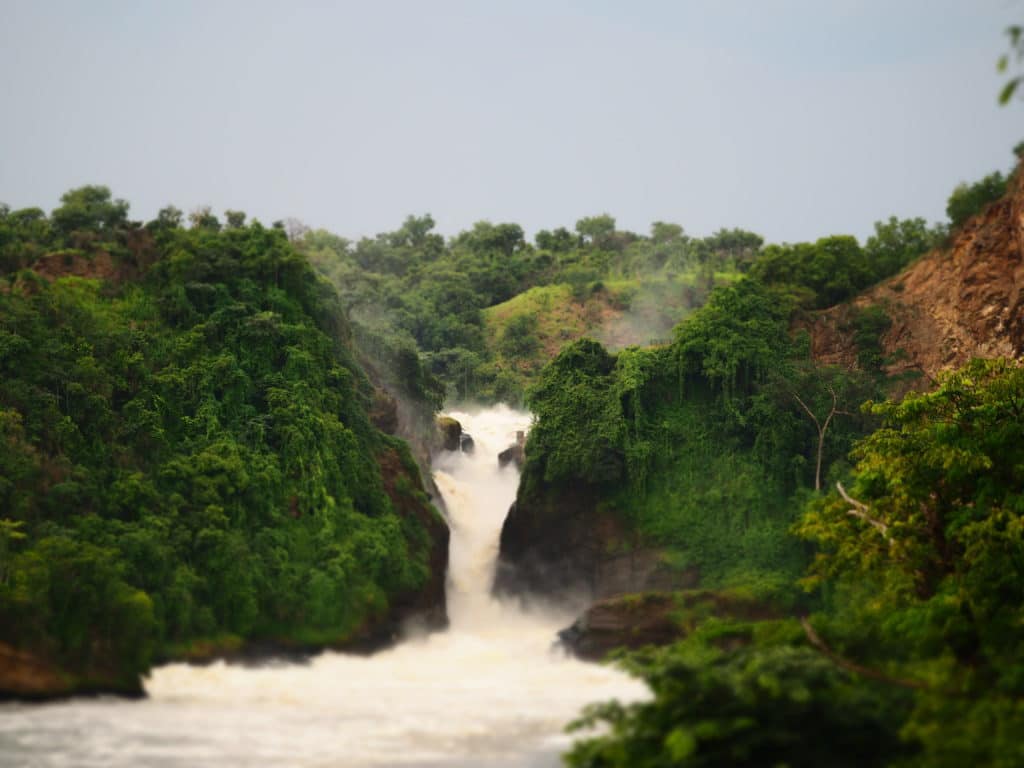
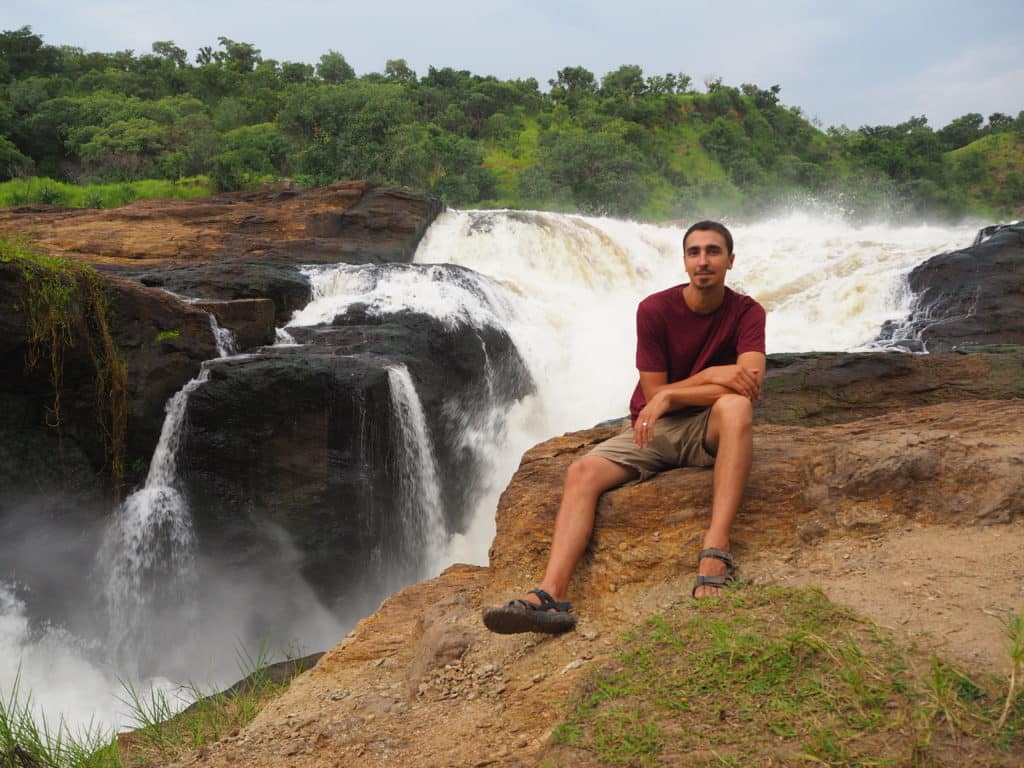
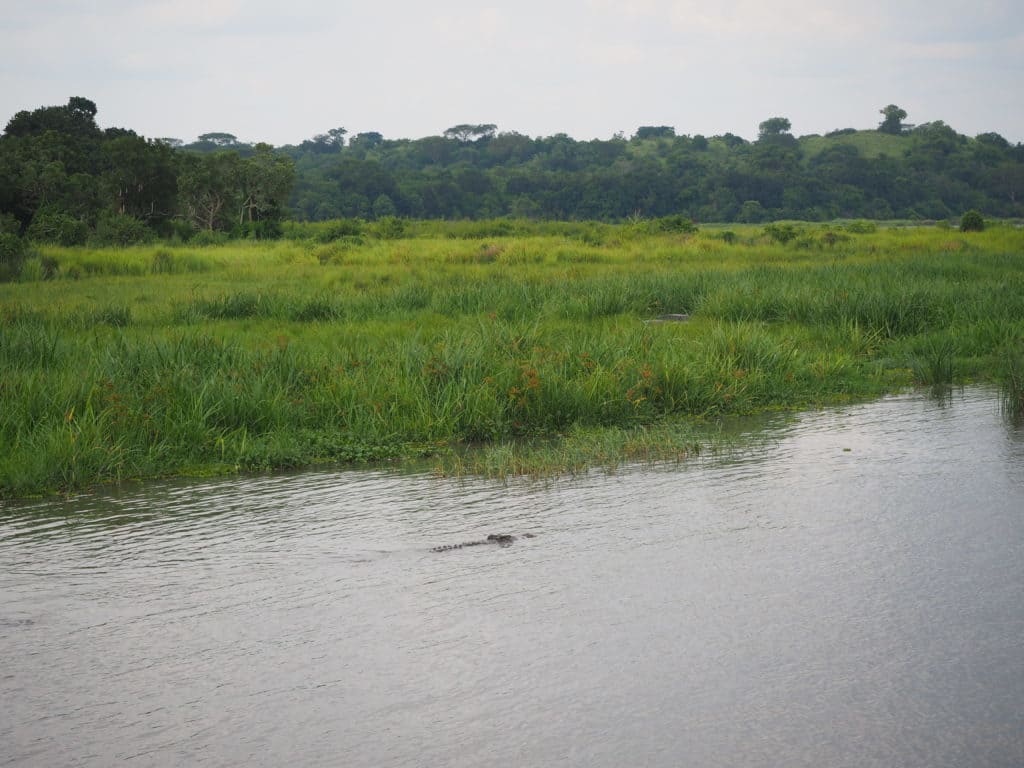
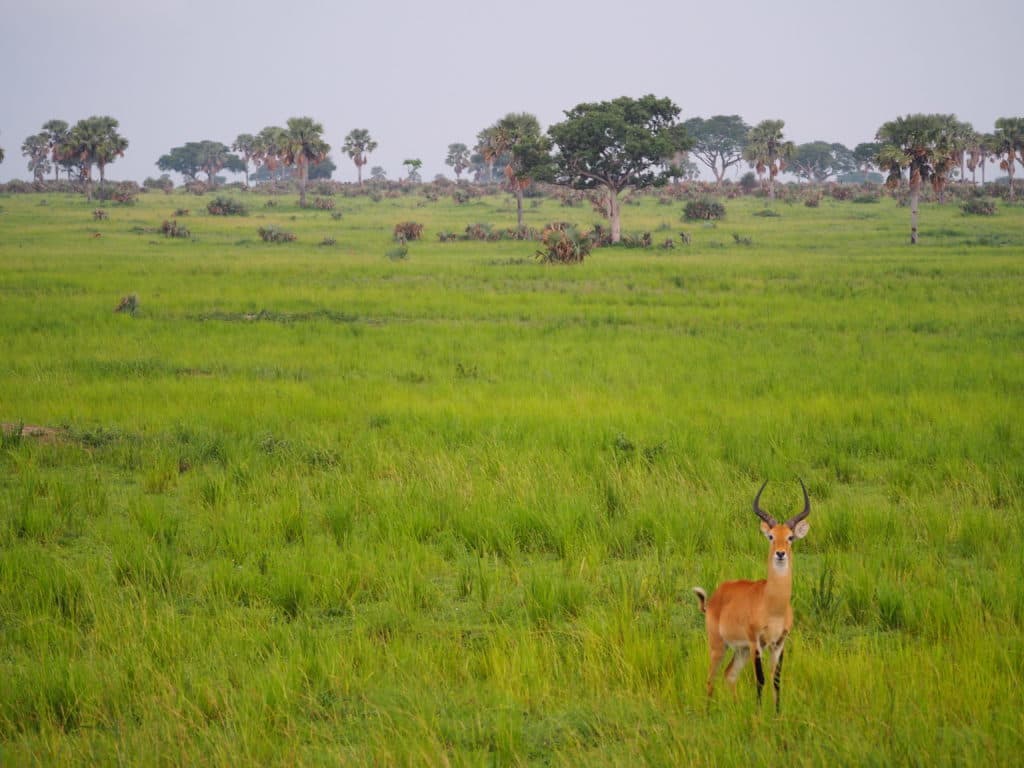

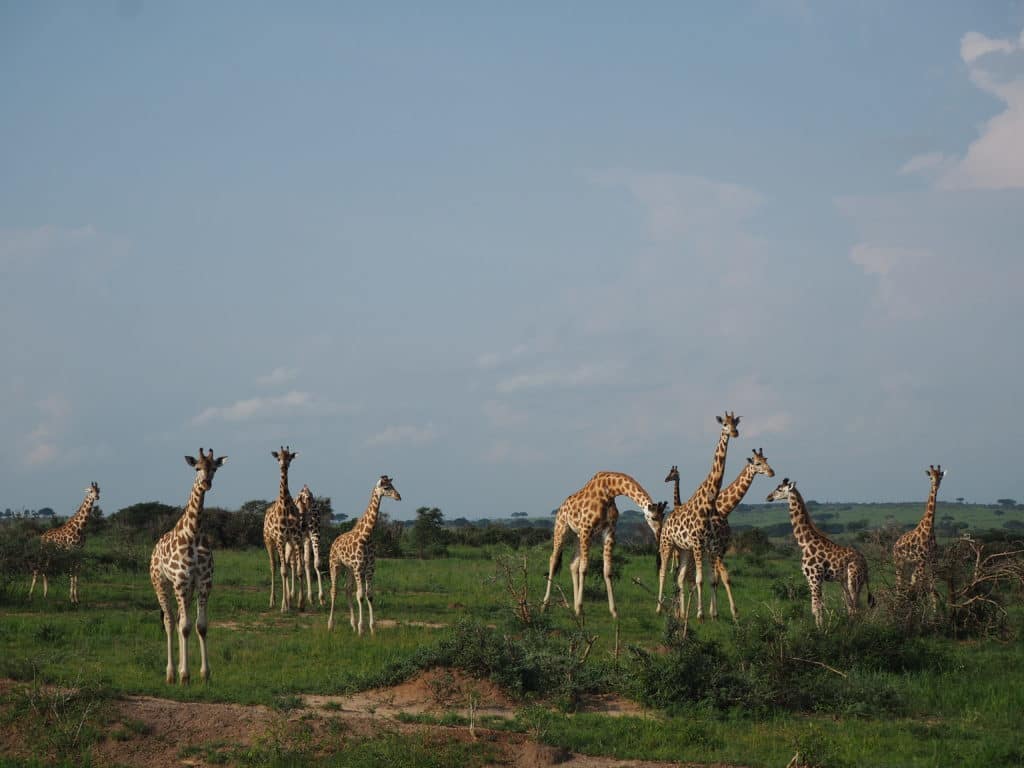
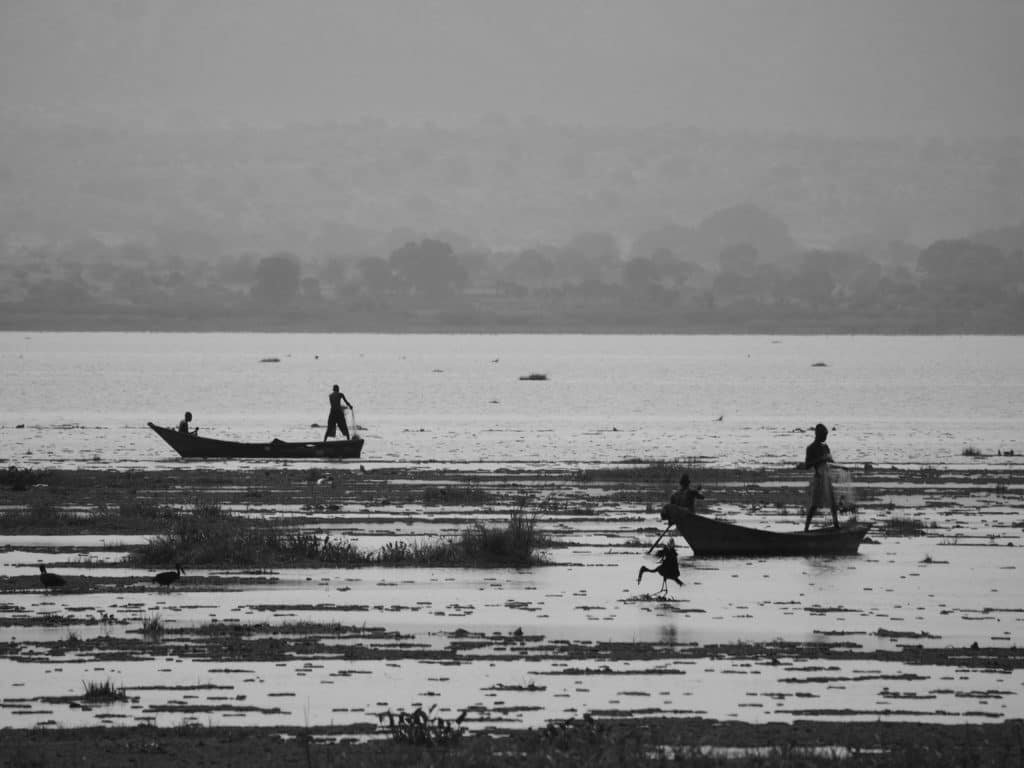
This collection of habitats, all rolled into one park, is what makes Murchison Falls so uniquely beautiful. It is rare to be able to see monkeys, crocodiles, lions, giraffe, elephants, waterfalls, and palm trees (yes, palm trees) in one park in one day. But that’s Murchison Falls.
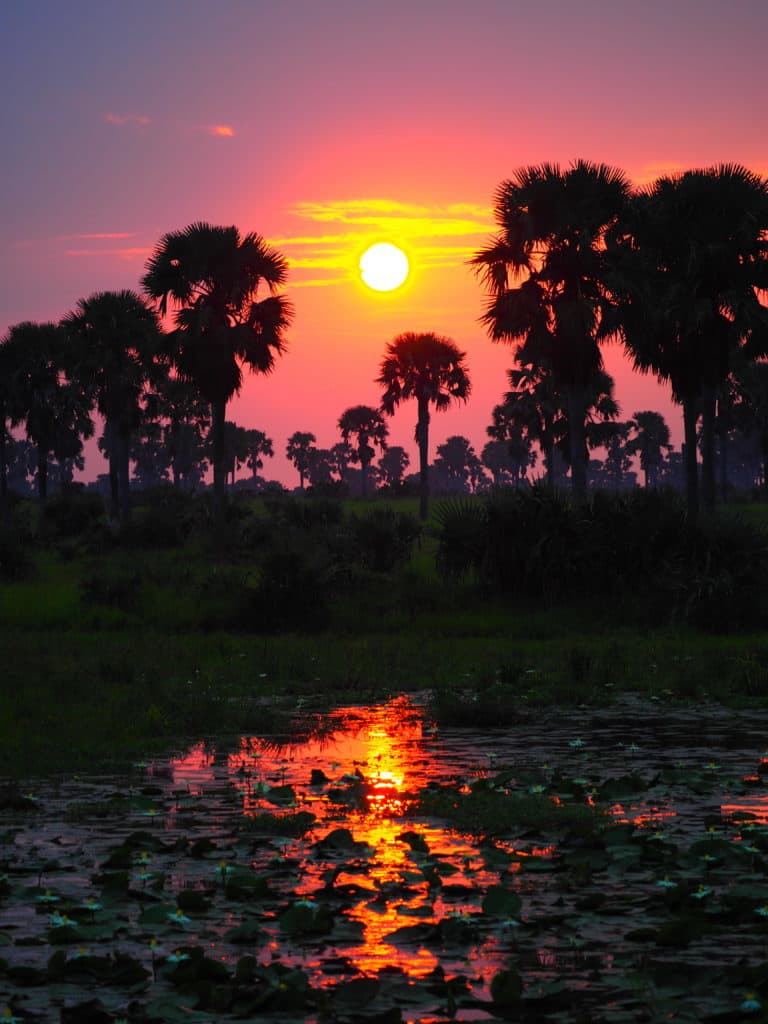
After spending a couple days in Murchison Falls we headed back south towards the capital of Uganda, Kampala. In Kampala we did what we normally do in large cities; wander about aimlessly through the streets getting a feel for the city. We love to do this because it makes us feel like we can get a glimpse of what the city is really like; street vendors selling everything under the sun, motorcycle taxis weaving in and out of traffic, bus drivers yelling out their destinations, and uniformed schoolchildren waving at us and shouting “Hey Mzungu! How are you?!” As with other large African cities, Kampala is busy. The streets are full of traffic and the sidewalks full of people. Life is everywhere, it is colorful, and it is beautiful. African cities have a charm like no where else on earth because of this.
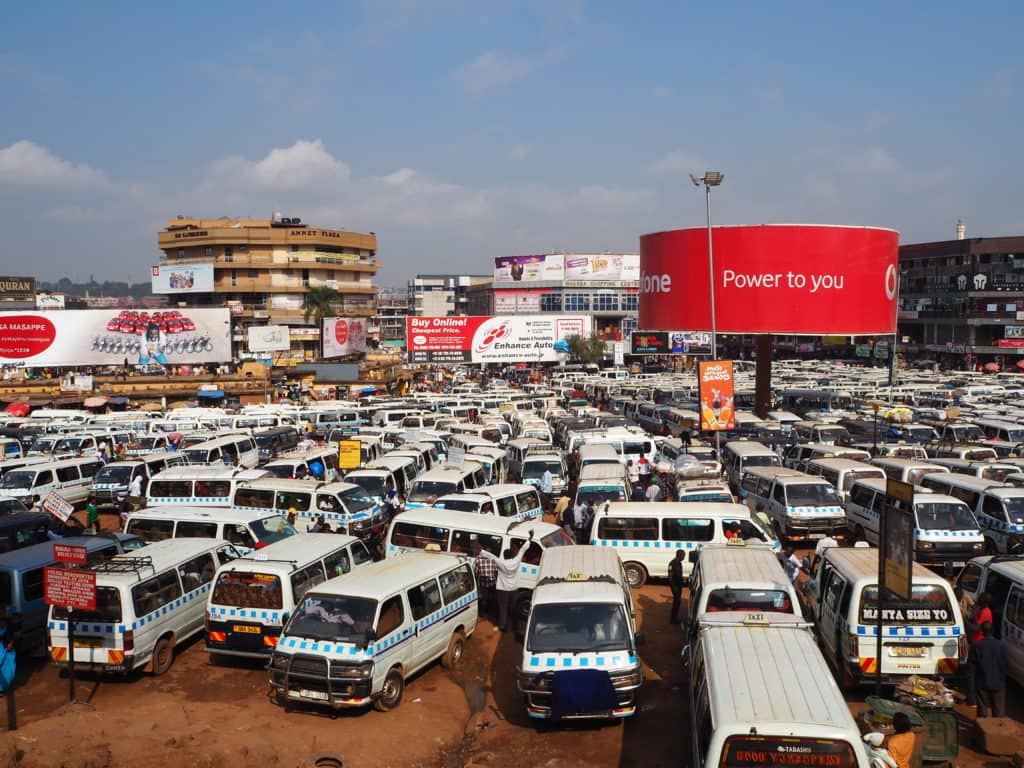
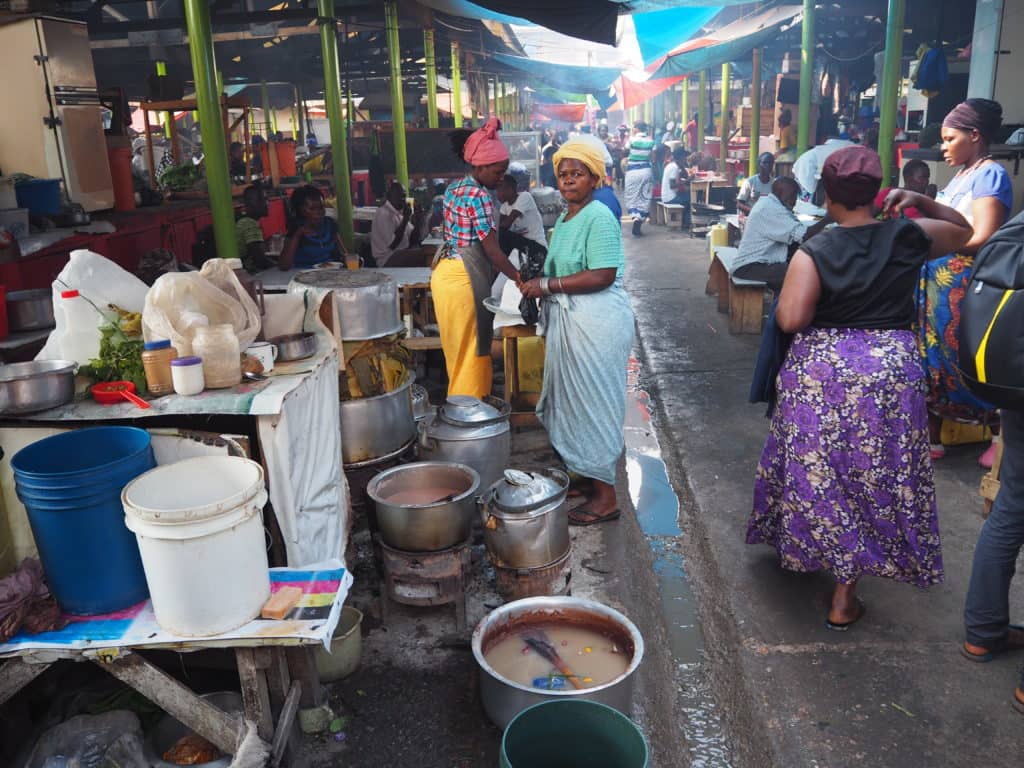
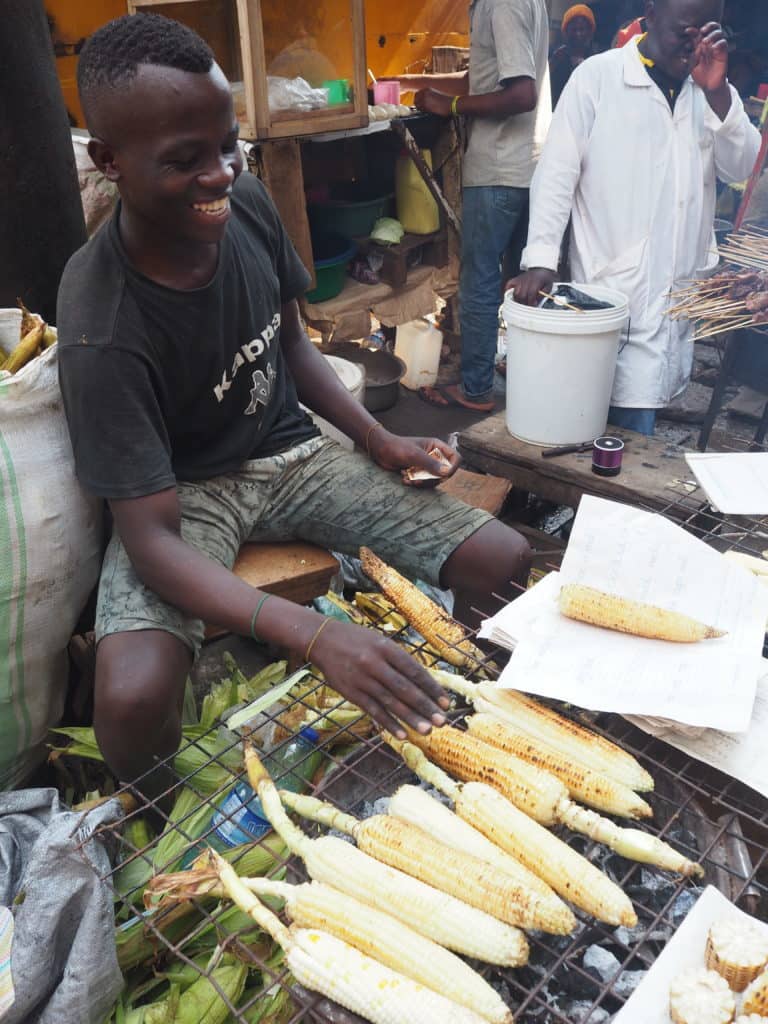
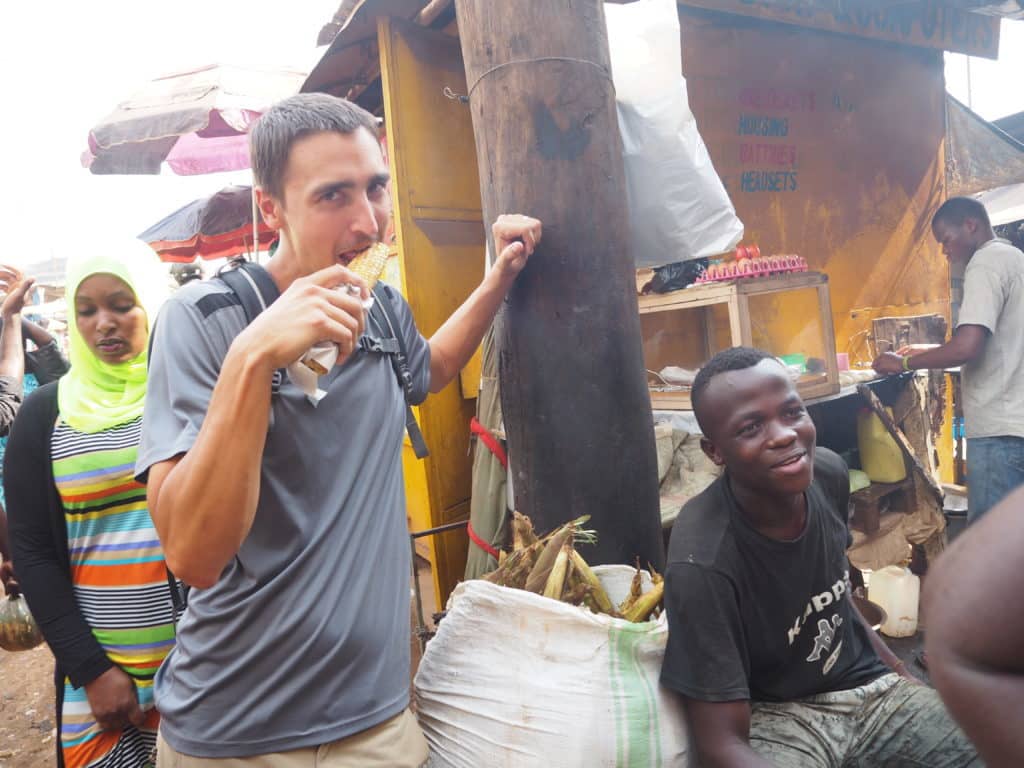
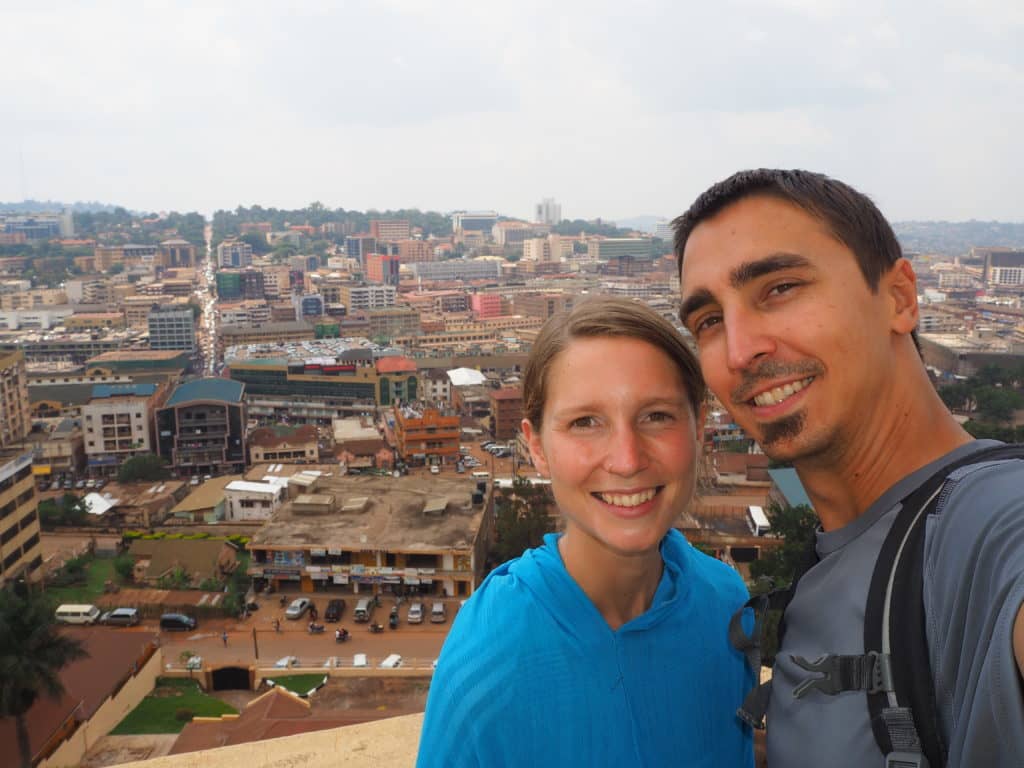
Here is a short video which shows exactly what the traffic is like in Kampala!
For our last adventure in Uganda we made our way to the city of Jinja, which stands on the exact location where one of the world’s greatest rivers, the Nile, first begins to flow towards Egypt. We came to this area because it is famous for whitewater rafting. How could we leave Africa without first rafting down the Nile?? So, we booked two spots on an all-day rafting trip with a company called Adrift and headed down the Nile. It might be a bit of a stretch to say we “rafted” down the Nile, it was more of a long swim broken up by occasionally rowing inside of a rubber boat, but needless to say the adventure was absolutely worth it. Being tossed out of a rubber boat and into the surging Nile is initally a bit scary, but we eventually got used to it! Watch this video to see for yourself if you think whitewater rafting on the Nile is your cup of tea!

